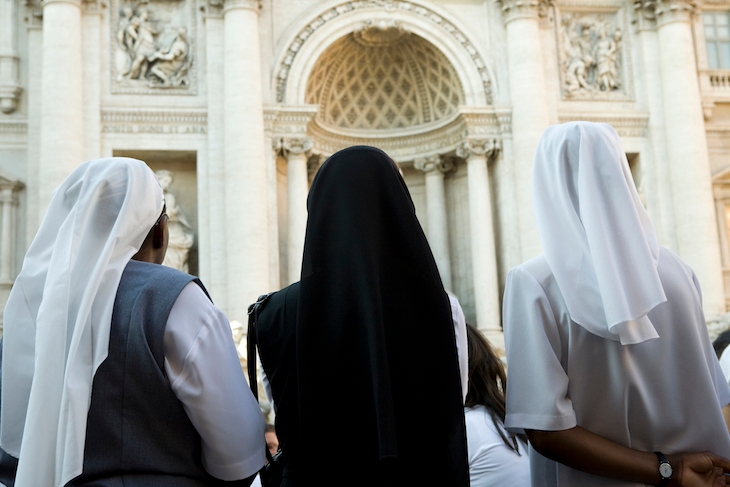Suffering, wrote Auden, takes place ‘while someone else is eating or opening a window or just walking dully along’. His poem ‘Musée des Beaux Arts’ emphasises the mundanity of pain (‘even the dreadful martyrdom must run its course/ Anyhow in a corner, some untidy spot’) and how irrelevant it is to all but the sufferer: ‘Everything turns away quite leisurely from the disaster.’
Alice McDermott’s eighth novel, The Ninth Hour, is peopled by women who refuse to turn away from the disasters of others. The ‘untidy spot’ is Brooklyn, sometime in the first half of the 20th century, and the unsung heroines with no time for leisure are the Little Nursing Sisters of the Sick Poor.
The novel follows various members of the city convent — bravely aging Sister St Saviour, austere Sister Lucy, warm, passionate little Sister Jean — into ‘the hidden rooms of the city’s most desolate’, where they change the dressings on the sores of old women, wash the bedridden and comfort the bereaved. One young widow, Annie, forges lifelong ties to the convent: after her husband commits suicide, the nuns arrange employment for her in their laundry. Annie takes her baby daughter Sally to work with her every day, and so the girl grows up among the Sisters, much loved yet confused as to whether her vocation is a true calling or simply the result of proximity to these unflaggingly selfless women.
Irish Catholics in America: this is well-trodden territory for McDermott, and ramshackle, impoverished Brooklyn is evoked with confidence and precision. Frequent shifts between the many characters and time periods are deftly managed. Yet the novel as a whole doesn’t do its rich subject justice. How best to do good, to be good, to shoulder some of the world’s suffering without letting it cripple you: McDermott’s answers to these major questions are compromised by clumsiness.
The novel mostly consists of muted observation, but every so often McDermott inserts a sensational event that strains credulity and mars the otherwise careful characterisation. A superior comparator is Colm Tóibín’s Brooklyn, where the central, shocking tragedy feels utterly uncontrived; set against an almost boring backdrop, it is as unexpected on the page as it would be in life.
Another problem is the voice: occasionally it is made clear that the novel is being narrated in the first person plural, by ‘we’, the children of Sally, looking back at the world in which their mother grew up. It’s hard to see what is gained by this decision, which raises distracting questions about how these children ‘know’ so much about, say, Sister Jeanne’s innermost thoughts. Again, a similar, more successful novel comes to mind. Anne Tyler’s A Spool of Blue Thread uses a simple third-person perspective to flick between three generations of the Whitshank family, demonstrating through a masterful series of reveals precisely how unknowable the lives of our parents and grand-parents are.
At the level of the prose, McDermott also comes up slightly short. Nothing is very wrong, but nothing is very right, either. There is one truly memorable image: the flesh of an amputee’s stump ‘puckered at the centre, turned in like a balled sock’. Otherwise, expect ‘steel-gray’ skies, a dead man’s face like ‘cold stone’, and mild redundancies such as ‘dark and dank’, and ‘part and parcel’. The Ninth Hour is full of interest, attention and diligent research; but aesthetically, it fails to satisfy.






Comments